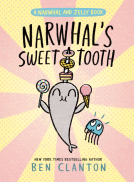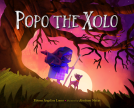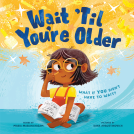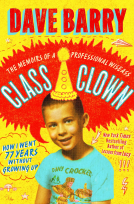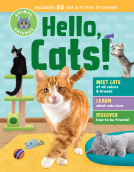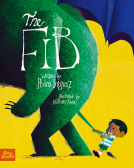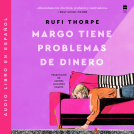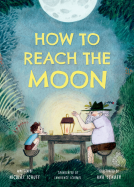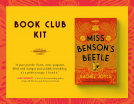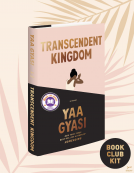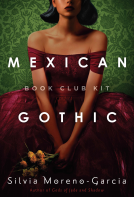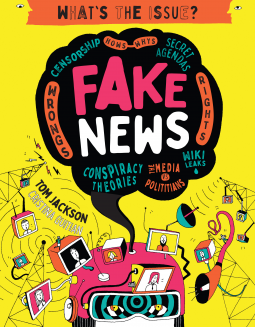
Fake News
Censorship • Hows – Whys • Secret Agendas • Wrongs – Rights • Conspiracy Theories • The Media vs Politicians • Wiki Leaks
by Tom Jackson
This title was previously available on NetGalley and is now archived.
Send NetGalley books directly to your Kindle or Kindle app
1
To read on a Kindle or Kindle app, please add kindle@netgalley.com as an approved email address to receive files in your Amazon account. Click here for step-by-step instructions.
2
Also find your Kindle email address within your Amazon account, and enter it here.
Pub Date Aug 18 2020 | Archive Date Aug 19 2020
Quarto Publishing Group – QEB Publishing | words & pictures
Talking about this book? Use #FakeNews #NetGalley. More hashtag tips!
Description
The concept of fake news and the media as a whole is discussed as part of the What's the Issue series. What's the Issue asks ‘what’s all the fuss about?’ It reviews what is at stake when we think about fake news, with the aim of helping young people to understand this difficult subject and provide them with the tools to inform their own opinions on the issue.
Available Editions
| EDITION | Other Format |
| ISBN | 9780711250345 |
| PRICE | $16.95 (USD) |
| PAGES | 96 |
Featured Reviews
A surprisingly broad compendium about a lot more than just fake news! Introductory topics in linguistics, history, psychology, etc. are presented in this fantastic book. The media and its many iterations are explained. Each concept is presented is bite-sized and easily understood. This book informs and asks the reader to dig deeper to identify what they see and hear to determine the truth, or the closest thing to it. This would be great for middle and high school aged students. And honestly, adults would benefit from reading this too!
Thank you NetGalley and Quarto Publishing Group / QEB Publishing for providing this ARC.
 John L, Reviewer
John L, Reviewer
Well, this was an interesting approach, and an in-depth look at many issues, but not what the title made me expect at all (nb – it might be that what I think is the title is, er, untrue). It's almost like the publishers latched on to the hot potato of fake news in order to sell us a field full of cold potatoes. Good quality cold potatoes, mind, but some almost of a different variety altogether. This is a quite excellent media studies primer, and as such is very suitable indeed to those pre-teenaged years when you might not be studying it specifically, but getting ideas about it throughout your full curriculum. So we start with the science behind us having a language anyway, and what place falsehoods play in that. We see the different types of information and how that is different to a fiction, before the visual arts, of all things, are addressed. It's a full third of the way through before we hit the nub of the matter, and even begin to see the media the current users of today might recognise.
All told I'm all in favour of this book, although I did see it with a dismissible set of inked artworks as place-setters; if the real thing ends up gaudy or childish I would not be thankful. For the text, blobbed at us in chunky one-paragraph units that do defy a logical reading order now and again but generally act quite cogently, is spot on with so much of what it says. We get to think about who owns the media, whether it's state-funded or chasing the advertisers' dollars, about spin doctors, and finally – and quite thoroughly – about fake news. I'm sure fake news was around when I studied media studies (to A-level standard, thanks for asking) but filter bubbles and echo chambers of self-re-confirmation and so on were not part of it all. That's the point the book doesn't quite get a handle on, perhaps because it would turn too many kids against it – that social media is just as bad as fake news. Of course there is a fair amount of fake news in real media, but so is there a heck of a lot of the fake about all aspects of social media.
"Won't Get Fooled Again" (ISBN 9781771134637) is probably a more focused look at the whole issue, and is more combative as opposed to "let's have a classroom discussion because it's ten to three on a Thursday and I need wine in the staff room", so take your pick when it comes to books about fake news. At least they both have a lot of important truth within them.
 Educator 640520
Educator 640520
Fake News is an excellent resource for teaching your children and teens about media literacy. The book delves into the history of communication and the media and gives concrete examples of how people in power control the story and how communication of information has changed since the development of the 24-hour news cycle, tabloid media, and the internet (including explanations about sponsored posts and trolls). It would be an excellent resource for a classroom or home library so that today’s youth are better educated in how they are being manipulated by the media and a solid resource for classroom discussions. The book has a bright, eye-catching graphic style and each topic of text is presented in smaller chunks, which will appeal to the school-age target audience.
Ok. This was a bit intense with all that tabloids, templates and illustrations and all ☺️
Enjoyed reading it. But it seems like way too information at parts and at other parts too less.
Nevertheless, it's a good try but yes, I need to check out the facts and that too who knows might be fake as well ☺️
Now here's the question:
Do I even trust myself?
Thank you #NetGalley for the ARC.
Opinions: The only reason this book doesn't deserve a full five stars is because it is not at all what you expect. News: Fact or Fake? was a fun, immersive guide through the history of technology and news sharing, offering insight on which "methods" of communicating are the safest and even providing examples of news scandals such as Hillary Clinton's emails in 2016. All of this was great fun and I definitely learned a lot, which is why News: Fact or Fake? truly deserves at least four stars. However, this book does not speak enough about discerning between real and fake news. By the end, readers will be fully aware that fake news exists, but they will have no concept of why people create it or how to decide whether they believe it or not. All in all, I definitely recommend this book to children and preteens, but it must be seen as a starting place - parents should still read it with their children and fill in any gaps.
My Favourite Thing: I appreciate the "user-friendly" setup of this book! All of the information is laid out in a visually pleasing way, making it easy to read and remember the important bits. Children, even those who aren't fond of reading, will find it easy to learn and stay engaged thanks to the supporting graphics and colors! Cristina Guitian deserves a huge shoutout for her contributions to teaching preteens through imagery and design.
My Least Favourite Thing: Because I've already discussed the unexpectedness of this book, this is the only other fault I found: Tom Jackson has a complete misunderstanding of what a "meme" is, meaning some of the information in this book is fake news! Obviously, teaching children about media and news is more important than explaining the differences between memes, vines, spoofs, etc, but if you're going to mention one of them in a book, you should try to get it right.
Total Rating: G
Language: G
Adult Content: G
Violence: G
Recommended For: News: Fact or Fake? is an insightful, educational, yet fun book for children and preteens who need a basic introduction to media and news. If you love "hands-on-activities" that help you learn, this book is for you!
 Cathy P, Librarian
Cathy P, Librarian
I thought this was a generally well produced look at an increasingly important topic. I liked the layout and found it to be very accessible and well written. It's not all about Fake News however (hence my 4 stars not 5). It takes a broad look at information and news from myths and creation stories to the printing press onwards. While this is interesting and there are perfectly valid points to be made, I think they take up far too much of this book and much more could have been done to look at and discuss fake news itself.
 Kaitlin L, Librarian
Kaitlin L, Librarian
A thorough and interesting explanation of what news is and how to interpret it. Definitions of tons of helpful terms and discussion of the evolution of news from hieroglyphics to memes. Each spread features a question for the reader to ponder or to inspire discussion. I especially liked the inclusion of relevant psychology - how we interpret fact vs fiction, biases, etc.
Visually appealing but lacking good illustrations or pictures.
Will purchase for my public library.
 Reviewer 531923
Reviewer 531923
This is one of my favourite series and I can't recommend it high enough.. Tom Jackson sets out to explore difficult issues and help the readers make their own informed opinions. I loved the way he started this book by asking the question of whether we live in the post-truth world where facts don't matter, while everybody is supposed to have an opinion even if they don't know much about the topic. After having read this book, you are definitely going to have a deeper understanding of various aspects related to news, communication, different media, censorship and how the Internet has been changing the way we make and consume the news. There are various factoids and history bits that are both entertaining and memorable, although my favourite feature of the book is its thought-provoking question prompts.
A great resource for teachers and educators.
Thank you to NetGalley and QEB Publishing for the review copy provided in exchange for an honest opinion.
 Mary A, Librarian
Mary A, Librarian
A great book for middle school students! It explains not only what all the “fake” news could be but also where to go to discover what’s real. Very Informative without being political. Everyone should also search for the truth and not just believe everything that is said or written, whether on social media or on television. It is an important concept that we all should follow.
I received an advanced reader copy from NetGalley and am voluntarily leaving my review.
Readers who liked this book also liked:
Paloma Angelina Lopez
Children's Fiction, Multicultural Interest, Religion & Spirituality
Nicolás Schuff (Author), Ana Sender (Illustrator), Lawrence Schimel (Translator)
Children's Fiction
Silvia Moreno-Garcia
Historical Fiction, Literary Fiction, Sci Fi & Fantasy
